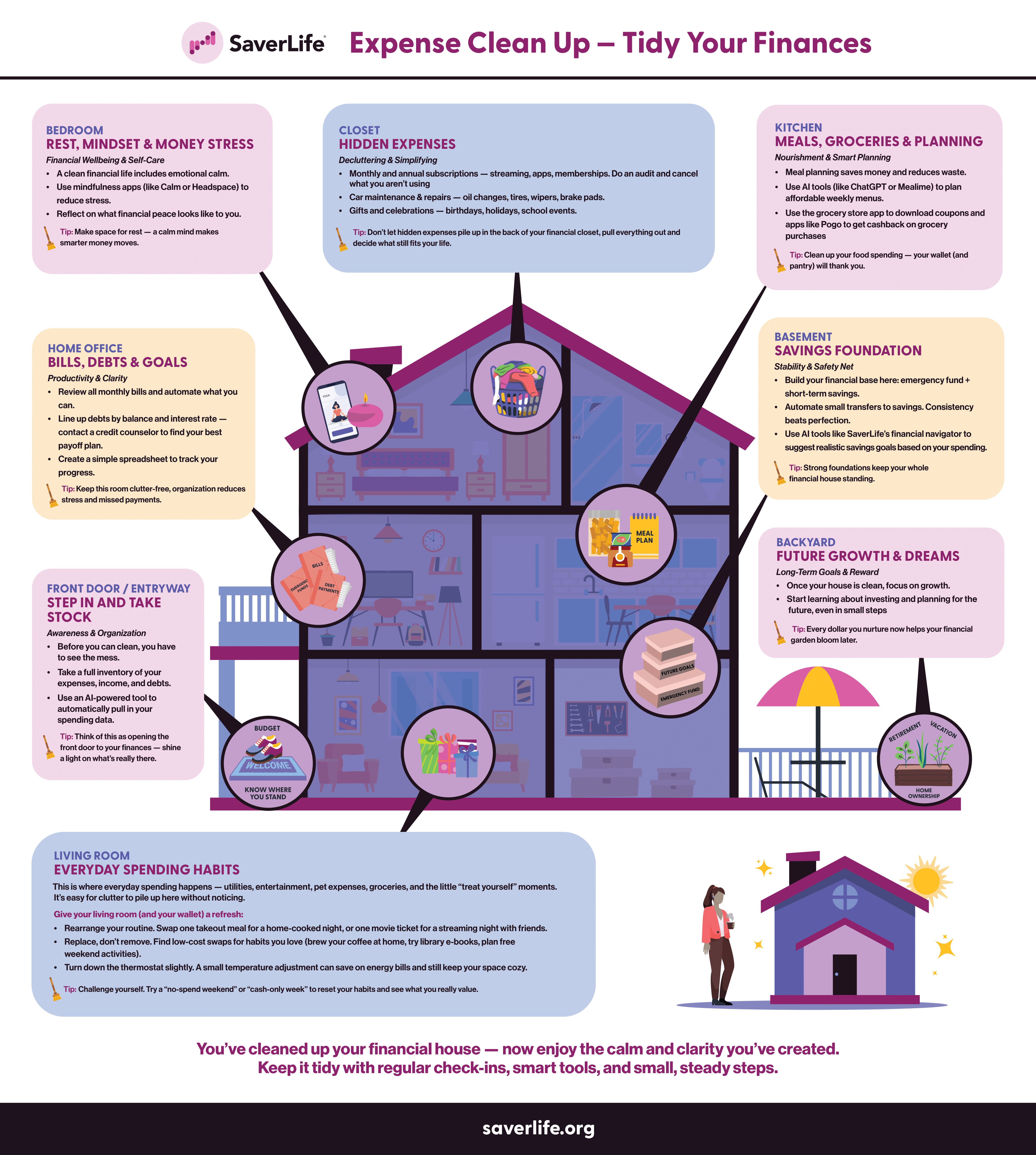
If you’re struggling to balance saving and living a lifestyle you want, you should consider creating a budget.
Like a healthy diet, budgeting allows you to enjoy spending in moderation but keeps you on track to make good financial decisions for your future. It looks different for everyone, but it should never take away from what you enjoy.
Best of all, it’s pretty easy to get started! We’ll walk you through the fundamentals so that you can create a budgeting process that works for you. You might even save some serious money along the way!
Create a foundation for future saving
As with any skill, like drawing or reading music, you must practice the basics before getting into the complex stuff.
When you create a budget, you’re practicing important saving habits. These habits will set you up for future success. There are a ton of resources to help you along the way, but these fundamental steps will get you started.
Figure out how much money you have coming in and when
If you’re looking to save money, start the budgeting process by getting a snapshot of what you earn. Totaling up your earnings makes planning your savings clearer, as you can figure out what you can reasonably manage to save and spend each month.
Look through all the money you have coming in, including fixed income, government assistance, passive income, or side hustles. You can always check bank statements and tax receipts for an accurate glimpse of these numbers.
Write down when you receive these payments, too! It helps map out when you can spend or make payments.
If you share income with a roommate or partner, have them do the same. Teamwork makes the dream work, and getting everyone involved in the saving journey can be empowering and keeps you on the same wavelength.
Once you have all your earnings calculated, you can start to figure out your expenses.
Determine your fixed expenses
Unfortunately, your earnings don’t represent how much you can spend every month. Fixed expenses should be taken care of before other spending is considered. Determining what these expenses are will keep you from overspending and missing necessary bills.
The first and most obvious fixed expense is your living costs, like monthly rent or mortgage payments. In your budget, you should subtract this from your earnings immediately, as it’s money you’ll always owe at the start of the month.
Other fixed expenses include your subscriptions, phone bill, insurance payments, car payments, etc.
You need to make some payments every month, but the total amount you pay may vary. Some examples are utility bills or groceries.
As you budget, try to estimate how much you normally pay for these expenses by looking at payments over the past few months.
Setting up automatic payments for bills can help you avoid late fees or missing payments, which can throw your budget off and affect your payment history. When possible, sign up for autopay and plan your budget around when those expenses will be withdrawn.
After sorting out your fixed expenses, you’ll be left with your spendable income. This is the money that you get to spend or save depending on your goals.
Organize your money into categories and accounts
With your post-expense balance ready, you can start to figure out where that money is going.
Start by thinking about how and where you typically spend and what you would like to save for. Look over bank statements and receipts to get a clear picture of where your money goes and create categories for spending.
Estimate average amounts for categories that won’t change, and create limits for categories you can cut back on. That way, you can map out that spending in your budget. Your categories may be food, transportation, maintenance, entertainment, etc.
This should reflect your spending habits, not someone else’s, so keep it true to you rather than following a random template. If you have a partner or kids, factoring in their own spending category can also be helpful.
These categories will help you set aside money and track spending so that you have a big picture of where you can cut costs on a smaller scale.
You might also consider opening a savings account.
Having all of your money in a checking account makes it much easier to spend, and this is something you want to avoid. Direct your savings to a designated spot and keep your checking for regular expenses.
A savings plan is a good idea if you want to break up saving into manageable pieces. Having a certain amount you save each week, you’ll have an easier time sticking to saving. You’ll also start building up your safety net for unexpected costs.
By keeping your money organized, you’ll get rid of surprises that hurt your saving plans. Once you have your money figured out, you can work toward your saving goals, like planning a vacation or starting your own business.
Kickstart your saving habits
Creating a consistent habit of saving and budgeting is how you can work towards short and long-term saving goals.
Unlike a New Year resolution that’s abandoned by the time February rolls around, this is a habit you want to stick with. It makes your financial future stable and can open new doors for you and your family.
Luckily, there are plenty of free tools and resources to help keep you motivated along the way.
Use apps and budgeting trackers to manage spending
There are plenty of saving tools out there to help build your savings up little by little. Some of them are apps that help you track your budget, and others help motivate you along your saving journey. There are also more involved apps that link to your bank account and track your spending habits.
With so many to choose from, it’s important to do your research and find one that works best for you.
Look for features like adding up your earnings, tracking spending, and writing down fixed expenses. Some may even have tips for better saving.
SaverLife, for example, offers financial resources, savings challenges, and even rewards you as you save. It’s up to you whether you want to link your bank account, making it a saving experience that is one hundred percent tailored to your lifestyle.
Other resources you might look into are “spare change programs.” It’s a modern upgrade to the jar full of quarters that’s sitting on your kitchen counter.
Some banks offer saving programs that are meant to save small amounts of change over time. The purchases you make are rounded to the nearest dollar, and the extra change that’s rounded up is moved directly into your savings account.
Try a monthly saving challenge
If you like seeing fast results through games and timed challenges, you might motivate yourself to save with a savings challenge. You can try these on your own or with a group of like-minded people to get a kick start on your savings.
These challenges aren’t meant to be impossible, so feel free to adapt them to your lifestyle and saving goals. Try to create a challenge that feels comfortable to you because it can help warm you up to sustainable practices that you integrate into your life long after the challenge is over.
For example, you may try a monthly savings challenge. Practice those cost-cutting strategies and save as much as you can in one month. Try to give yourself a fixed amount to work towards, or commit yourself to set aside a certain amount every week.
Just putting aside $10 a day, basically the cost of a fast food meal, for 30 days will save you $300!
Some organizations even host their own savings challenges and reward you directly for completing them. For example, you could try SaverLife’s monthly savings race challenges. You just need to join the race, save the goal amount that month, and you’re automatically entered to win money to add to your savings (or to treat yourself for your hard work).
Use a range of resources to find saving strategies that work for you
Saving doesn’t need to be difficult; it may even be fun when you adjust your mindset! Your financial goals don’t need to be a distant dream either. By streamlining your personal finances, you can meet your goals with ease.
Figure out a budgeting process that works best for your life. Start your saving journey from the ground up and kickstart those healthy financial habits. Interested in getting rewarded for saving? Try out SaverLife today!


